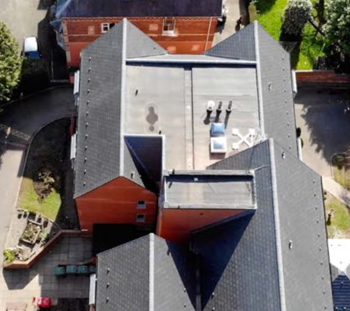ICE People's Choice Award 2018 winner

|
| Tim Watterson, Design Director at NCTIR, gives a behind-the-scenes account of the award-winning Kaikoura recovery project. "Many people didn't think we could do it." |
Contents |
[edit] Introduction
The Kaikoura recovery work was a massive collective effort that resulted in engineering excellence and collaboration on scale never seen before in New Zealand, and every team member – past and present - should feel proud of themselves.The earthquake struck on 14 November 2016 with a magnitude of 7.8.
[edit] Widespread damage
Damage was significant and widespread, and included the Kekerengu fault rupturing and lifting the ground up by 10m, and significant uplift also to the seabed at Kaikoura and along the coast. The earthquake generated a tsunami approximately 7m high.
The earthquake generated the strongest ground accelerations ever recorded in New Zealand and caused damage throughout many South Island regions, closing both State Highway 1 (SH1) and the Main North Line railway (including damage to tunnels and bridges) between Picton and Christchurch. Several major roads were closed due to slips, damage to bridges and infrastructure.
Kaikoura and the surrounding rural communities were isolated - all roads and the rail network in and out of the area were damaged and closed by the slips.
More than 150km of the railway line was damaged in the earthquake, leaving railway tracks twisted, tunnels and bridges damaged and bringing down over 1 million cubic metres of material (soil and rock) onto the tracks below in the form of landslides.
The Kaikoura Marina also suffered significant damage and had to close.
[edit] ‘A huge recovery effort was required’
The social and economic effects of the earthquake were significant and felt far and wide across New Zealand. A rapid and huge recovery effort was required, with highly ambitious timelines set for the re-opening of the critical transport assets.
In response, the North Canterbury Transport Infrastructure Recovery (NCTIR) Alliance was set up by the New Zealand Government to restore the earthquake-damaged infrastructure between Picton and Christchurch.
[edit] The NCTIR Alliance
NCTIR is an alliance partnership between the NZ Transport Agency, KiwiRail, Downer, Fulton Hogan, HEB Construction and Higgins.
NCTIR is supported by a Professional Services Sub-Alliance including Aurecon, WSP-Opus and Tonkin & Taylor.
More than 1,300 people from over 100 organisations from across New Zealand and around the world helped to restore the transport corridor along the Kaikoura coastline.
The team worked hard, under extremely difficult conditions, to design and rebuild a safe highway and rail line to reconnect Kaikoura and critical South Island transport links to the north and south, as well as benefiting the wider surrounding communities also still recovering from the effects of the earthquake.
Hundreds of workers spent months living away from their families to reconnect State Highway 1, get the rail line up and running and re-open the Marina, all within only an astonishing 12 months.
[edit] Action in the face of adversity
They faced a lot of adversity: design progressing alongside construction, pouring foundations on the sea coast around the tides through winter, abseiling teams removing boulders from precipitous cliff faces, and a small army of helicopter pilots with monsoon buckets drenching the cliffs to bring material down in the first few months.
Design and construction progressed at a pace never seen before in New Zealand, and included new sea walls, bridges, clearance of multiple slips, rock anchors and netting solutions, rockfall protection fencing, tunnel repairs, and extensive road and rail reconstruction.
All this was achieved without any serious injuries, which is an outstanding effort.
[edit] Next steps
Having achieved all its major breakthrough milestones to date, NCTIR is now focussed on improving safety and resilience along much of the reconnected road and rail transport corridors.
We are immensely proud to have won the ICE People’s Choice Award for 2018.
Working closely with the community, the NCTIR team has worked extremely hard in challenging conditions and significant time pressures.
To safely achieve what we have in such a short amount of time is simply outstanding! Many people didn’t think we could do it.
The level of personal commitment and teamwork across NCTIR has been quite humbling and a career highlight for many. It’s great to have reconnected communities and see first-hand what it means for the region.
Thank you to all who voted for us!
[edit] ICE People's Choice 2019
Voting for this year's awards will open in September. In the meantime, you can explore all the projects that made the shortlist in 2018.
Featured articles and news
The Building Safety Forum at the Installershow 2025
With speakers confirmed for 24 June as part of Building Safety Week.
The UK’s largest air pollution campaign.
Future Homes Standard, now includes solar, but what else?
Will the new standard, due to in the Autumn, go far enough in terms of performance ?
BSRIA Briefing: Cleaner Air, Better tomorrow
A look back at issues relating to inside and outside air quality, discussed during the BSRIA briefing in 2023.
Restoring Abbotsford's hothouse
Bringing the writer Walter Scott's garden to life.
Reflections on the spending review with CIAT.
Retired firefighter cycles world to raise Grenfell funds
Leaving on 14 June 2025 Stephen will raise money for youth and schools through the Grenfell Foundation.
Key points for construction at a glance with industry reactions.
Functionality, visibility and sustainability
The simpler approach to specification.
Architects, architecture, buildings, and inspiration in film
The close ties between makers and the movies, with our long list of suggested viewing.
SELECT three-point plan for action issued to MSPs
Call for Scottish regulation, green skills and recognition of electrotechnical industry as part of a manifesto for Scottish Parliamentary elections.
UCEM becomes the University of the Built Environment
Major milestone in its 106-year history, follows recent merger with London School of Architecture (LSE).
Professional practical experience for Architects in training
The long process to transform the nature of education and professional practical experience in the Architecture profession following recent reports.
A people-first approach to retrofit
Moving away from the destructive paradigm of fabric-first.
International Electrician Day, 10 June 2025
Celebrating the role of electrical engineers from André-Marie Amperè, today and for the future.
New guide for clients launched at Houses of Parliament
'There has never been a more important time for clients to step up and ...ask the right questions'
The impact of recycled slate tiles
Innovation across the decades.
EPC changes for existing buildings
Changes and their context as the new RdSAP methodology comes into use from 15 June.

























